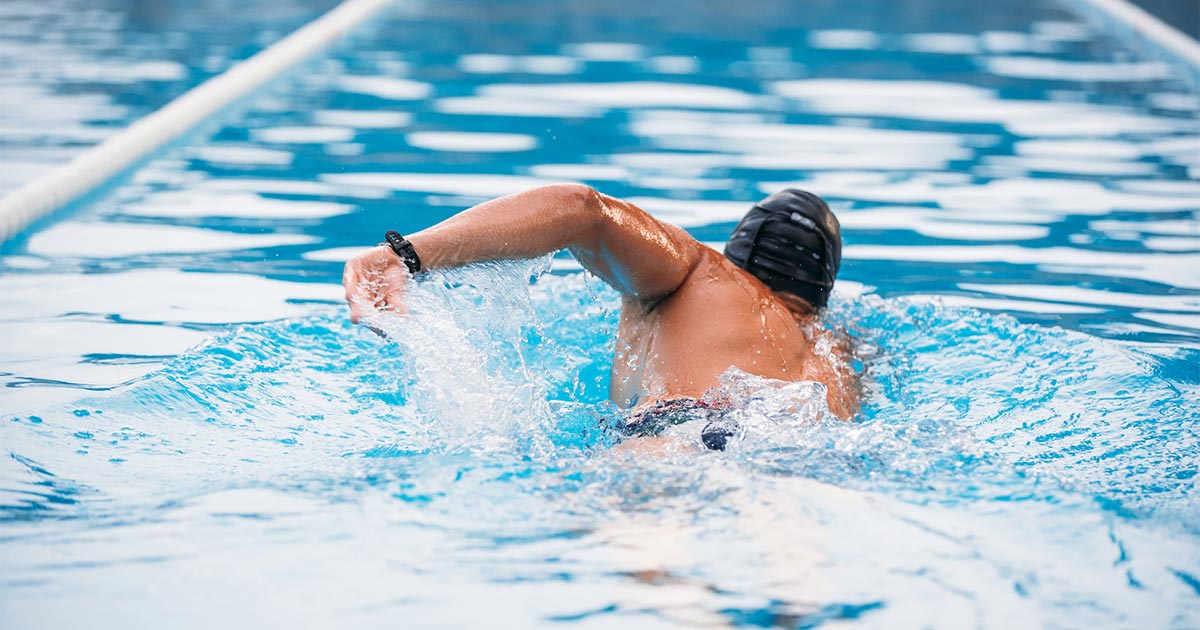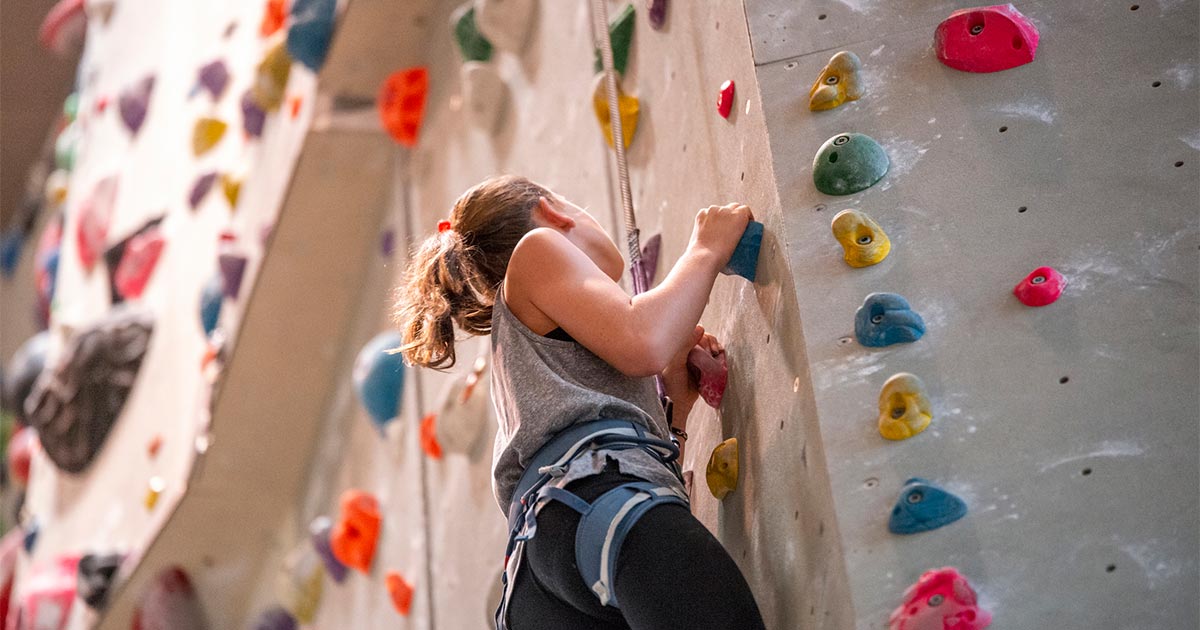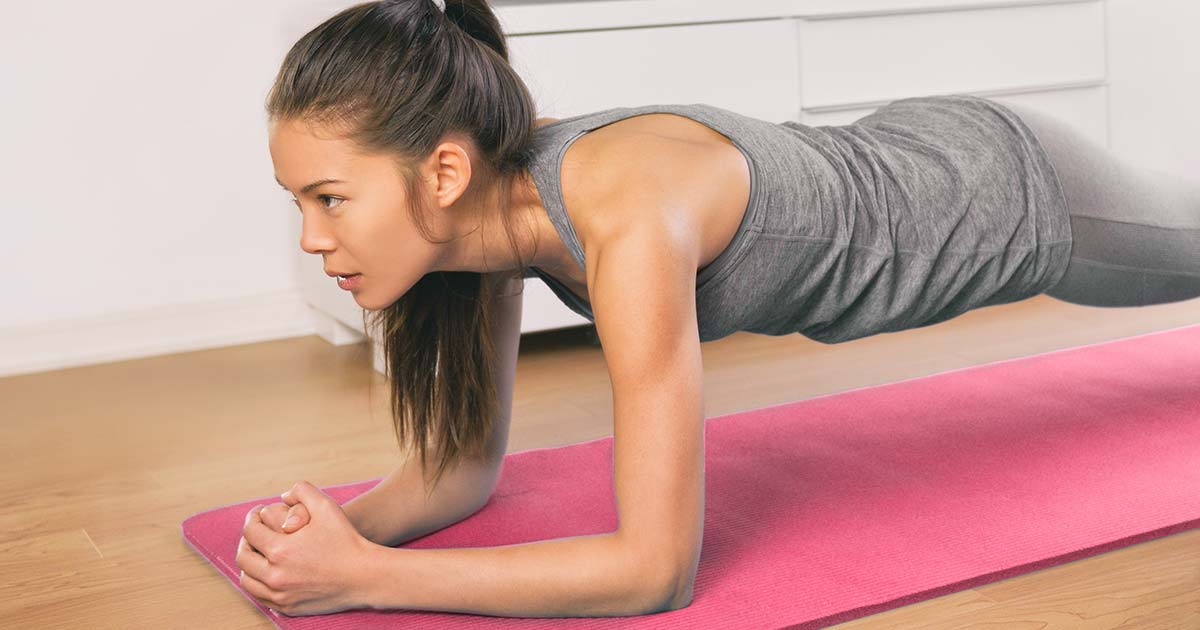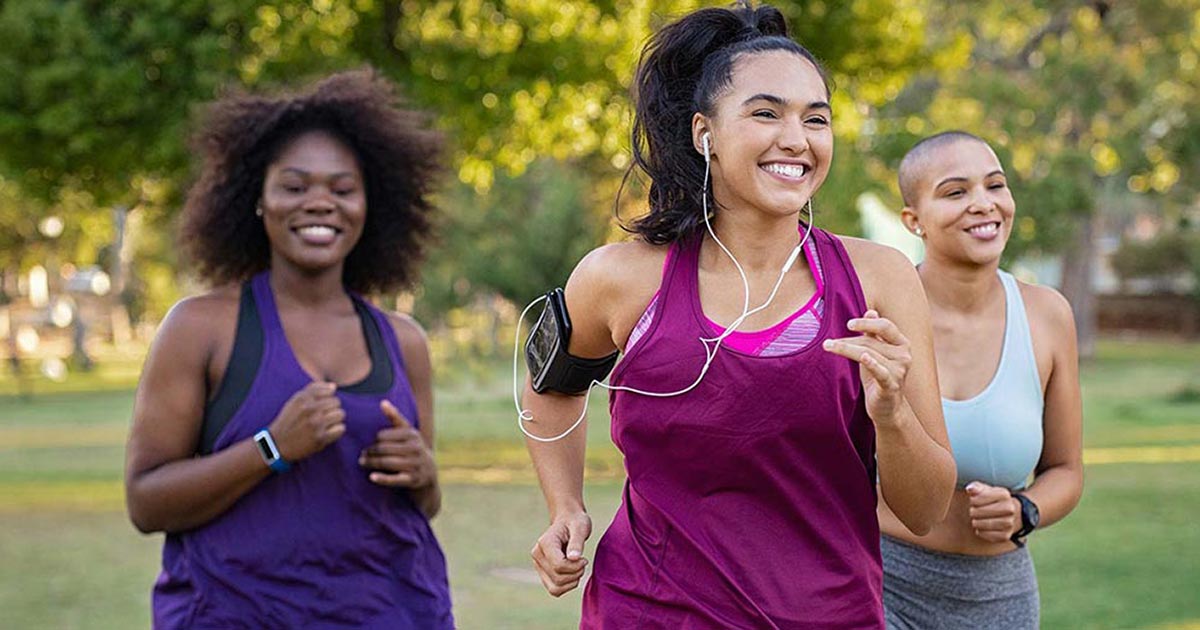
Advice to improve your movement, fitness, and overall health from the #1 in orthopedics in the U.S.
Sport Climbing Exercises and Tips for Beginners
Interested in trying your hand at climbing? HSS orthopedic surgeon Joshua Dines has a guide to getting started.
Advice to improve your movement, fitness, and overall health from the #1 in orthopedics in the U.S.

Given that sport climbing is more accessible than traditional rock climbing, both in terms of location and equipment costs, and it’s a fun full-body workout, it’s not surprising that more people are interested in trying it.
As with any new physical activity, sport climbing requires some preparation and training to make the most of it — and prevent injuries, says Joshua Dines, MD, an orthopedic surgeon in the Sports Medicine Institute at HSS. “Even though it may seem like more of a hobby, approach it like any sport, making sure to ease into it and warm up before a session.”
Ready to make the climb? Here are a few tips to help you get started.
Ramp up smartly
As fun and exciting as high-level sport climbing may seem (and it is!) when you see it on TV, keep in mind that you’re watching highly trained athletes at the top of their field — so temper your expectations for your first few forays. “You’re seeing the best in the world!” Dr. Dines says. “Be smart and ease into it if you’ve never done it before.”
That means learning proper technique, for one. “Take lessons in a safe environment,” Dr. Dines says. “There are a ton of climbing gyms — these are a great place to start. They’re safe with soft floors, they cater to different skill levels, and there are instructors and other people in the community willing to help.”
Once you’ve learned the basics, start with brief climbs and slowly build up the duration and intensity of your climbs as your endurance increases. “The first time you go out, just go for a little bit, like a half hour,” Dr. Dines says. “Your muscles need to acclimate to the different movements. You’re stressing your body in a different way, using muscles you don’t use on an everyday basis.”
Be sure to pace yourself, using your body as a guide. “If you’re hurting, don’t do it,” Dr. Dines says. “If you’re fatiguing, your form will break down, which could lead to injury.”
Finally, make your goals realistic. “Getting to the top is not the goal,” Dr. Dines says. “As with lifting weights, if your plan is to do 10 reps, and you get hurt at eight, shut it down. Don’t push through hurt even if you haven’t reached the top.” That caution includes taking on more adventurous climbs. “As you get more comfortable, you can take your climbing outside, but it’s a bit more dangerous, with fewer safety mechanisms built in — so be careful.”
Warm up before your climbing sessions
As with any sport, it’s essential to warm up and stretch beforehand to prepare yourself for the exertion to come. “Climbing is a full-body activity, so approach the warm-up the same as you would for basketball or soccer. Warm up the muscles, get your heartbeat up, and do some stretches,” Dr. Dines says.
After a few minutes of cardio (e.g., jumping jacks, a brief jog), try these moves to activate your shoulders, core, and lower body:
Bird Dogs
- Start on your hands and knees with your hands beneath your shoulders and your knees under your hips.
- Reach your right arm forward and left leg back, keeping your back and hips stable by engaging your core muscles.
- Return to the starting position, replacing your hand and knee on the floor.
- Repeat the motion, reaching with your left arm and right leg.
- Repeat, doing 5 to 10 reps per side.
Walking Lunges
- Start standing with your feet shoulder-width apart.
- Step forward with your right leg, bending your right knee and lowering down so your right thigh is parallel to the floor while keeping your torso upright. Pause briefly.
- Staying low to the floor, step forward with your left foot and lower down as you did for the right leg. Pause.
- Repeat, doing 10 to 12 lunges on each leg, alternating legs as you walk forward.
Bodyweight Squats
- Start standing with your feet slightly wider than shoulder-width apart, toes turned slightly outward.
- Without bending forward, bend your knees to lower yourself into a squat position so your thighs are parallel to the floor.
- Press into your feet to straighten your legs and return to standing.
- Repeat, doing 12 to 15 reps.
Focus on strengthening
For days you’re not climbing, work on overall strengthening and mobility. “When you climb, you put your body into pretty weird positions,” Dr. Dines says. “It takes a ton of core strength and rotational mobility.” And while advanced climbers may prioritize finger grip and forearm strength, most beginners should focus on their whole body. “A rookie mistake is depending too much on the upper body,” Dr. Dines says. “Shoulders take on the brunt of climbing, but good climbers use their legs a ton.”
Try incorporating a few exercises that work the muscles around your rotator cuff, hamstrings and quadriceps.
I-Y-Ts
- Start standing with your feet shoulder-width apart, arms at your sides. You can also do this exercise holding light dumbbells or weights.
- Raise your arms over your head toward the ceiling, forming the letter “I” with your body. Slowly lower your arms back to your sides.
- Raise your arms over your head to form the letter “Y,” squeezing your shoulder blades together. Slowly lower your arms back to your sides.
- Raise and extend your arms out to form the letter “T.” Slowly lower your arms back to your sides.
- Repeat for 12 to 15 reps.
Jump Squats
- Start standing with your feet slightly wider than shoulder-width apart, toes turned slightly outward.
- Bend your knees to lower yourself into a squat position so your thighs are parallel to the floor.
- Press into your heels to explode up, jumping a few inches off the floor.
- Land softly, bending your knees to prepare for another rep.
- Repeat for 15 to 20 reps.
Single-Leg Lunges
- Start standing with your feet shoulder-width apart. You can also do this exercise holding light dumbbells or weights at your sides.
- Step forward with your right leg, bending your right knee and lowering down so your right thigh is parallel to the floor while keeping your torso upright. Pause briefly.
- Press into your right heel to step back to starting position.
- Repeat for 10 to 12 reps on the right leg.
- Switch sides and repeat on the left leg.
Common sport climbing injuries and how to avoid them
Relative to traditional (or “trad”) climbing, sport climbing is relatively safe — falls, for one, are normal and expected as climbers work out moves. Still, it’s possible to hurt yourself, so take care to avoid injuries.
A hard fall can be disastrous, resulting in dislocated shoulders, broken bones and worse, depending on the climb. Avoiding injurious falls involves making sure you’re in a safe environment with proper equipment. “When you get in a harness before a climb, make sure it fits appropriately and you’re using it correctly,” Dr. Dines says. “As you level up and you get more aggressive, equipment becomes a huge factor.”
For most beginning climbers, overuse injuries are likelier than those incurred from a fall. “New climbers are prone to tendinitis in the rotator cuffs, elbows, and forearms and labrum tears in the shoulder,” Dr. Dines says. “These are the muscles so critical for climbing. Amateur climbers tend not to use their upper-body as effectively as experienced climbers.”
To avoid overuse injuries, build up your time and intensity slowly and pay attention to your body’s signals. “If you go from doing nothing to climbing a lot, your hands, wrists, and fingers could be sore,” Dr. Dines says. “If it takes you a couple of days to recover, be aware that maybe you overdid it a bit and climb a bit less next time.”
But there’s a difference between a bit of soreness that lasts a few days and a persistent hurt. “If something hurts when you’re doing it or it’s not getting better with time—five days later the pain is still there—get it checked out,” Dr. Dines says. “This is not ‘no pain, no gain.’ If you can’t get back to where you were before a climb, that’s an injury.”
Published 7/29/2021


